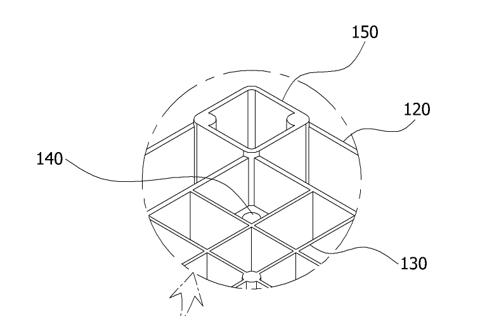Follow our WeChat account
Author: CHISPO ATTORNEYS AT
Date: 2023-04-10
After successfully invalidating a series of patents for the support structure of raised floors a few weeks ago, CHISPO managed to successfully invalidate all the patent rights relating to the raised floor patent in question. This case presented a series of challenges which caused us to reflect on the way claim rights are interpreted in terms of both patent rights confirmation and litigation.
The patent rights confirmation and litigation are the two most important procedures in the patent lifecycle. Generally speaking, the determination of the scope of protection should remain fundamentally consistent in the process of patent rights confirmation and patent infringement. However, due to the different purposes of determining the scope of protection between the two procedures, there are certain differences between them. In the patent rights confirmation process, the purpose of determining the scope of protection is to determine whether the claim rights meet the conditions of authorization by clarifying the meaning of the technical features and distinguishing them from the compared documents. In the patent infringement process, the purpose of determining the scope of protection of claim rights is to determine the specific scope of the patent owner's exclusive rights, that is, to reasonably define the boundary between the patent owner's exclusive rights and the freedom of the public to implement existing technology. In order to fully protect the freedom of the public to implement existing technology, the publicity of claim rights is more accentuated in the patent infringement process. One of the most basic principles for determining the scope of protection in the infringement process is to interpret the literal meaning of the claim rights, and then determine the scope of protection of the claim rights.
Regardless of whether the interpretation concerns the confirmation stage or the litigation stage, the purpose is to explain the specific limitations in the claim rights in order to meet the patent stage requirements. Such interpretation can be roughly divided into three categories:
(1) There are obvious errors in the claim rights, and the unique correct interpretation can be determined based on the specification and drawings in the patent application while the claim rights can be interpreted based on the unique correct interpretation.
(2) The meaning of the technical terms in the claim rights is clear to those skilled in the art, although they are not specifically defined in the specification, but they can be interpreted based on the understanding of those skilled in the art.
(3) The technical features in the claim rights have ambiguous literal meanings, which can be interpreted in conjunction with the specification and drawings, provided that they do not conflict with common knowledge in the field.
Invalidation Case:
The claim rights of the patent in question include protrusions (16) in the frame, which then include a first part (22) and a second part (24). The first part (22) is perpendicular to the second part (24), and its specific structure is shown in the following figure:

The compared document discloses a flatness adjustment unit (150) with a square shape and protruding from the bottom surface. Its specific structure is shown in the following figure:

It is not difficult to see, therefore, that the technical features disclosed in the comparative document include the technical features recorded in the patent claims of the patents involved, specifically the protruding portion (16). However, when the patent owner explained the protruding portion (16), they did not base their explanation on the content recorded in the claims, but rather based it on the description and drawings, emphasizing that the protruding portion (16) is an L-shaped structure, while the flatness adjusting unit (150) is a mouth-shaped structure.
Following the examination panel’s review, it was determined that the claims only limit the protruding portion (16) to include the first part (22) and the second part (24), which are perpendicular to each other, and do not specifically limit the shape, structure, and positional relationship of the protruding portion (16). When explaining the patent, the patent owner should not deviate from the protection scope limited in the claims and directly determine the shape, structure, and positional relationship of the protruding portion (16) according to the more specific L-shaped structure disclosed in the description and drawings. It was determined, therefore, that the flatness adjusting unit (150) provided in the comparative document disclosed the protruding portion (16).
After reflecting on the dynamics of the case, the author believes that although different interpretations are often used at different stages of the patent application process, everyone prefers to use the interpretation most favorable to them. For example, during the infringement stage, the patent owner always hopes that the most general understanding will be used to interpret the claims, while during the invalidation stage, they wish to use the most reasonable understanding interpretation. Nevertheless, such interpretations can only serve as a reference, rather than a decisive basis. Thus, in order to clarify the most reasonable protection scope for the claims, the author believes that the broadest and most reasonable interpretations should coexist and not deviate from the content originally recorded in the patent application.